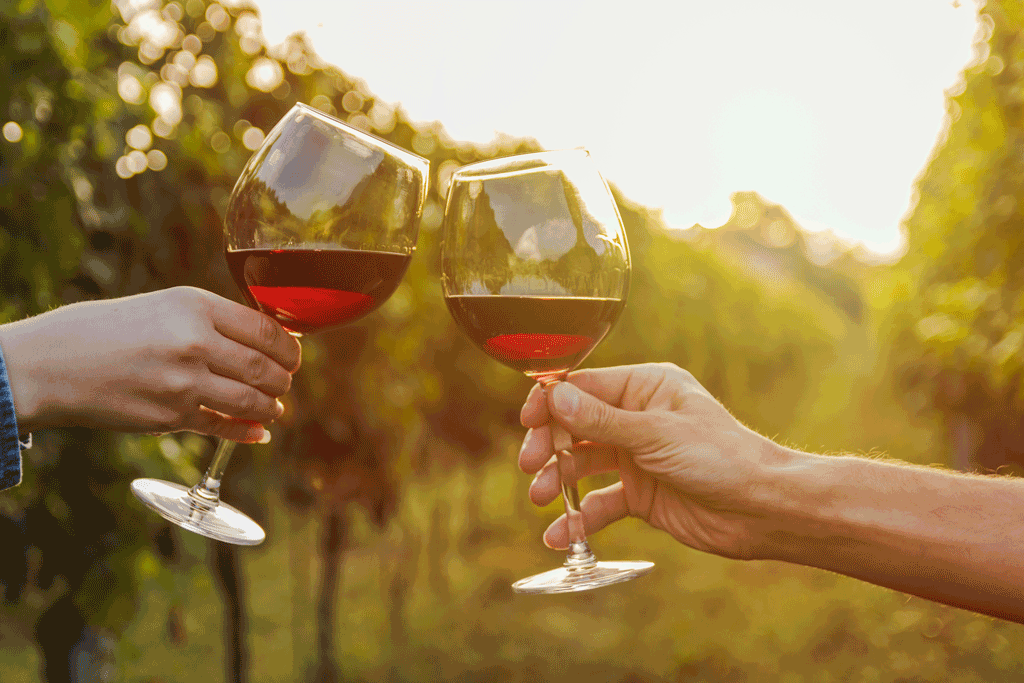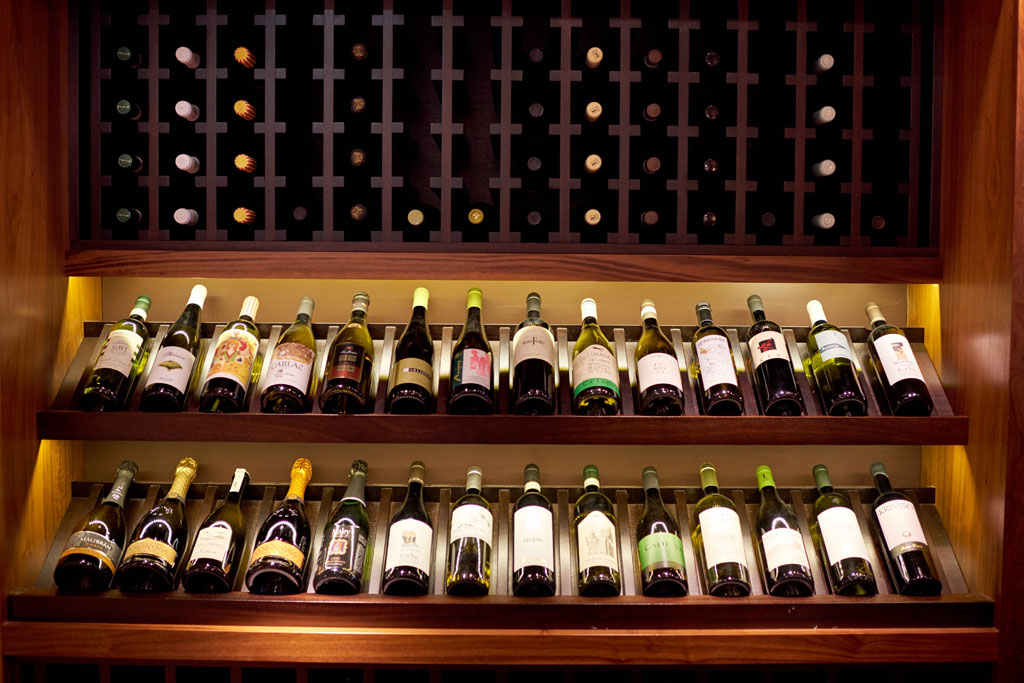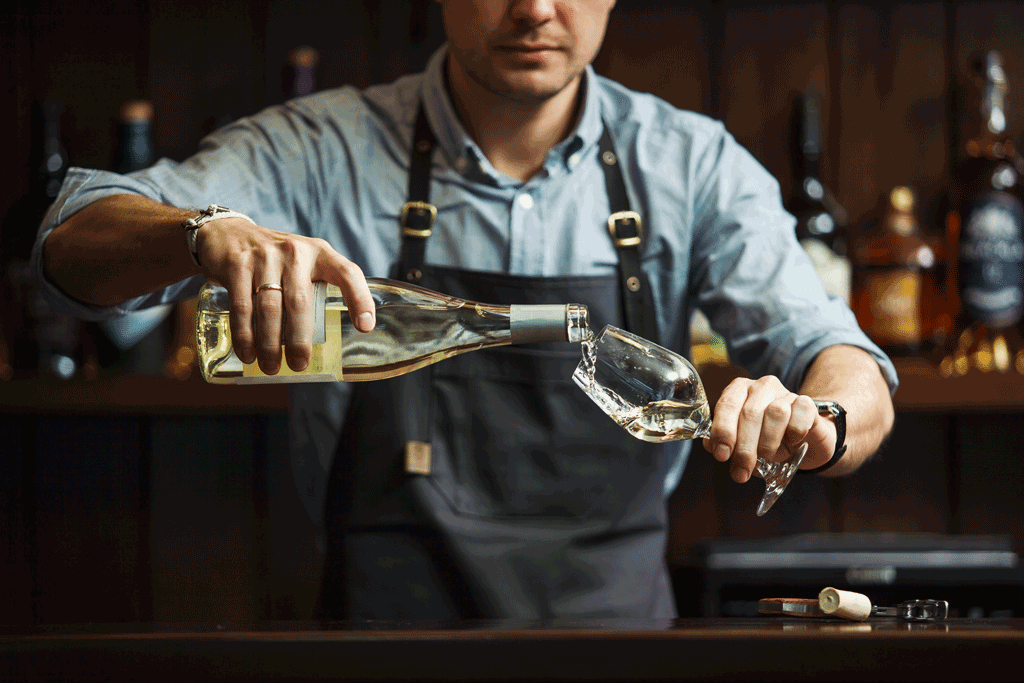Wine Education Week: A Guide To Wine Tasting
A drop of wine education
This post may contain affiliate links. Learn more
Looking to learn more about wine this Wine Education Week? Here vino expert Lucy Stevenson from the Wine & Spirit Education Trust gives us the lowdown on how to taste wine, as well as some pointers about labels and the key terms to know…

GettyImages
Wine tasting
Learning how to taste wines will help you identify your favourite flavours and expand your drinking repertoire, as well as help fuel your passion for wine and increase your enjoyment of this versatile and amazing drink.
First, make sure you have a clean palate: no toothpaste or coffee. Second, grab a notebook to jot down your observations. Now, follow the three key steps…
Appearance
First, study how the wine looks in the glass. If it’s clear and bright, it should be good to drink. If it’s dull or hazy, it could be faulty. Next, assess the colour. Reds wines can be purple, ruby, garnet or tawny in colour. For whites, most have a pale lemon colour in the glass, but a smaller number are gold, amber or even brown. For both reds and whites, an orange or brown hue around the rim of the glass usually indicates an older wine.
Nose
Now to smell the wine. Swirl it in the glass (to release aromas) then take a sniff. Hopefully you’ll pick up pleasant aromas – but if it smells musty or damp, the wine could be ‘corked’. Now try and identify the different aromas – do they remind you of fruits, vegetables, flowers or spices? There will rarely be just one aroma. Like a musical chord, there will always be more than one note.
Palate
Now for the fun bit! Take a generous sip and let the wine coat your mouth. Consider two things – how does it taste and how does it feel? The flavours should be largely identical to what you got on the nose – but may be slightly more or less intense. Try to detect how sweet or dry the wine is and how it feels in your mouth. A light wine will often be lower alcohol and a heavier wine more alcoholic – but there are lots of other things at play such as sweetness, tannins and flavour intensity.

Wine labels
Knowing more about wines will build your confidence when choosing a bottle to drink at home or in a restaurant or bar, as well as opening your eyes to the amazing variety of wine styles available worldwide.
If you often find yourself wandering the wine aisle, desperately trying to decipher the scribblings on labels to find the right bottle, here are a few tips to help you navigate the shelves and pick the perfect wine for your personal taste.
Region
The area where the grapes are grown has a big influence on a wine’s style, quality and flavour. Warm climate regions tend to produce white wines with riper fruit flavours (think peach, apricot, pineapple etc.) and reds with notes of stewed black fruit like blackcurrants and blackberries. Cooler climate regions often make white wines with citrus and green fruit flavours and reds with notes of fresh berries.
Grape variety
There are hundreds of grape varieties grown across the world, but some clear favourites come up time and again, so it’s worth getting to know their flavour characteristics. For example, wines made from Sauvignon Blanc smell like freshly cut grass or gooseberries, while Rieslings are delicately floral. Pinot Noir is known for its bright red fruit flavours, while Syrah (or Shiraz) has hints of blackberry and black pepper.

GettyImages
Producer or brand
It’s easy to spot well-known brands or famous châteaux and estates on the label – but more obscure producers may be harder to detect. If you’ve liked wines from a particular brand or producer before, that’s great! But names don’t tell you much about the actual taste of the wine – so don’t get too hung up on them.
Sweetness
Most wines are dry but, depending on your taste, sweeter wines are also available. This is sometimes flagged up on the label. Dry wines might be labelled ‘sec’ or ‘brut’ (French), ‘secco’ (Italian), or ‘trocken’ (German). An off-dry or medium-sweet wine might say ‘demi-sec’ (French), ‘abboccato’ (Italian), or ‘halbtrocken’ (German).
Year
The year or ‘vintage’ indicates when the grapes were picked. Most wines are best drunk young and fresh, but a few high-quality wines are worthy of ageing to allow them to develop more complex flavours. For day-to-day drinking, a good bet is to pick a bottle from a recent year.
ABV
The level of ‘alcohol by volume’ in a wine is stated as a percentage on the label. For most dry wines, this will be somewhere between 11-14.5%. Light-bodied whites and sparkling wines are at the lower end. Bold, full-bodied reds from warm climates are more potent.
The Wine & Spirit Education Trust celebrates its 50th anniversary this month with its first ever global Wine Education Week, running 9-15 September 2019. There are events taking place across the UK – find out what’s on near you at wineeducationweek.com
